Ways to Help Baby Learn to Walk
From rolling and sitting to crawling and cruising, your baby's journey to walking is an exciting time.
The first two years of a baby's life are filled with exciting milestones, and one of the most exciting ones is learning how to walk.
From about 4 to 15 months, your baby goes from learning how to sit up to walking around the house on their own. And while it may seem to go by in a flash, there are lots of little stages that your baby will go through to get to that first successful step. During this exciting time, you can help your baby gain the confidence to take those first steps through simple games and words of praise.
Related:When Do Babies Start Walking?
If your baby isn't walking by their first birthday, don't worry. Not all babies will hit this milestone at the same time; some are slower and others are faster, and most babies won't be fully walking until closer to 15 months. If you're concerned about your baby's walking skills, talk to your pediatrician.
Stage 1: Sitting
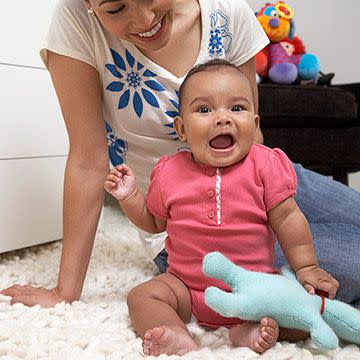
You might be surprised to know that sitting unassisted is the first exciting step in mobility. Sitting will help will help your little one strengthen the muscles they will need when it comes time to learning how to stand.
Age: 4–7 months
What you can do: During play time, roll a ball back and forth or play stacking games to help enhance their little muscles.
Stage 2: Crawling
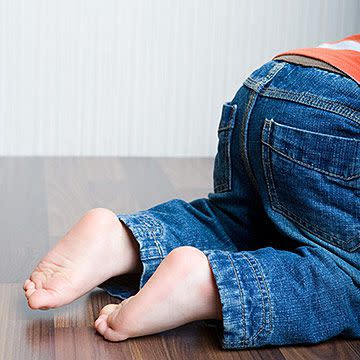
The most important thing for babies to do at the crawling stage is to practice moving their arms and legs at the same time (even if they do a belly crawl or a scoot). Your baby will need these skills when it comes time to walk.
Not only doesn't crawling get your baby to work those muscles, but it also promotes balance and coordination skills.
Age: 7–10 months
What you can do: Help your baby develop these areas by having them crawl from one side of the room to the other. Don't forget to praise them for all that hard work!
Stage 3: Pulling Up
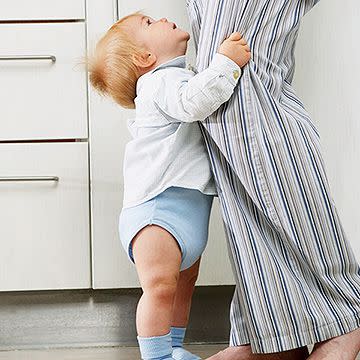
As your baby becomes stronger and more curious, they will start pulling themselves up to standing with the support of furniture (or you!). This new skill of pulling up is a great time to help your baby start working on balance while standing, and getting familiar with the standing position. This is also an excellent time to baby-proof your home if you haven't already.
Age: 8 months
What you can do: Help your baby to pull themselves up, then show them how to bend their knees to get back down to the floor. This will help ease those first falls when they start taking steps on their own.
Stage 4: Walking With Help

Once your baby has practiced pulling up and appears to have some confidence, try helping them take a few steps by holding hands and carefully guiding your child. This practice is a great way to work on balance and help your baby get used to the idea of movement while standing, which will help him with the next phase of walking.
Age: 8–9 months
What you can do: Practice, practice, practice. Practice is key for your baby at this stage. The more your baby gets used to standing and being on their feet, the more likely they will feel comfortable to take those first few steps.
Stage 5: Cruising
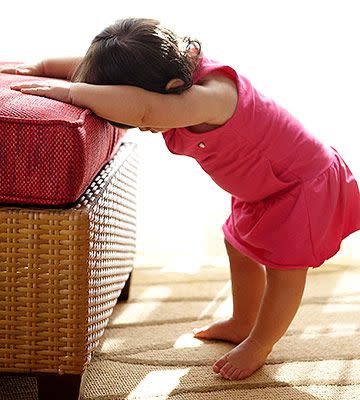
Your baby will then start using walls and furniture to get around on two feet. This movement is referred to as cruising. As your baby becomes more mobile, make sure your home is completely baby-proofed and all furniture is secured to the wall to prevent accidents and injuries.
Every year, there are an estimated 3,200 tip-over accidents that occur when babies and toddlers pull on furniture and appliances like dressers and TVs. To prevent this, you can install drawer stops and childproof locks around your home in addition to safety straps that tether furniture to the wall to prevent tip-overs.
Age: 8–9 months
What you can do: Encourage your child to become more confident while cruising and try to let go of the wall or furniture. Just make sure they have a soft landing spot.
Stage 6: Standing Without Help
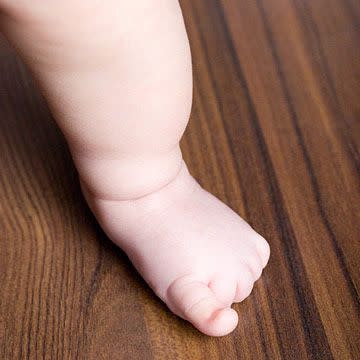
Balance is a key part of walking. If your baby can stand and balance for a few seconds, they will soon feel like they can try to take a step.
Age: 9–12 months
What you can do: Turn balancing into a game. Sit with your baby on the floor and help them stand up. Then count how long they can stay up before they tumble. Give lots of praise after each attempt!
Stage 7: First Steps
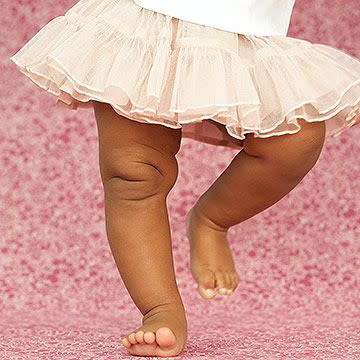
The first steps are a monumental moment for your little one—so make a big deal out of it. Walking is all about confidence so everything leading up to those first steps needs plenty of praise and encouragement.
Age: 9–12 months
What you can do: Cheer your baby on as they try to take their first steps. Practice together by sitting on the floor and guiding them slowly. As they gain balance, let your baby take steps on their own.
Stage 8: Walking
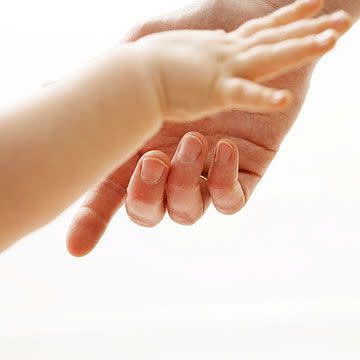
It may take a few stumbles and series of steps before your little one is fully on the move on their own two feet. Continue to praise your baby as they start to explore walking. Keep in mind that some babies will still prefer to cruise or crawl for a while, and may do a crawl/walk before they regularly try to walk.
Age: 12–15 months
What you can do: Encourage walking as much as possible. For example, when you set your baby down put them in a walking position instead of a sitting position.
What Parents Should Know About Baby Walkers
While it may be tempting to purchase gear intended to help your baby walk, avoid sit-in baby walkers. The American Academy of Pediatrics (AAP) strongly discourages the use of walkers. They say that walkers not only slow down walking development but also are extremely dangerous.
Thousands of toddlers end up in the hospital every year due to the popular item. Canada already has a ban on walkers being sold in the country, and the AAP is recommending the United States take the same measure.
Related:The Best Baby Walker Alternatives for Tots on the Move
